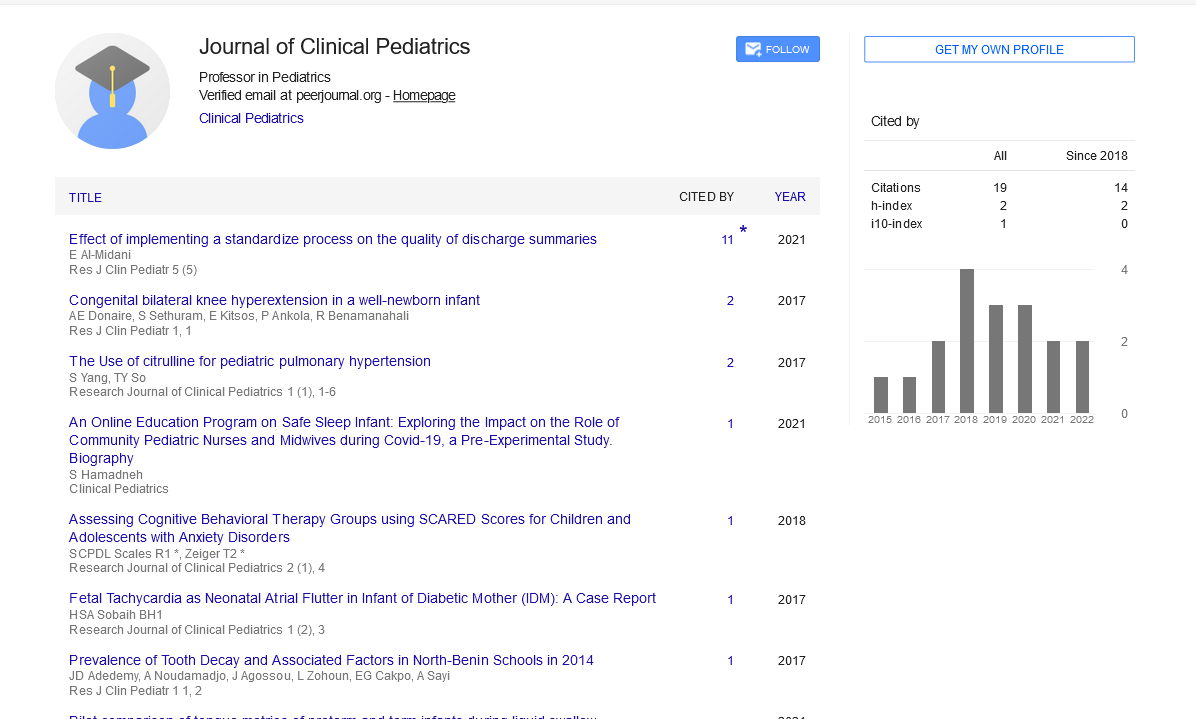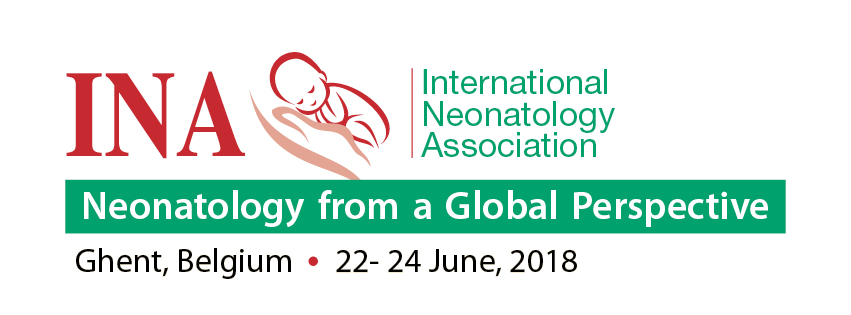Opinion Article, Res J Clin Pediatr Vol: 7 Issue: 3
Neonatal Cardiology: Mechanisms of Heart Development and Congenital Defects
David Michael*
1Department of Pediatric and Congenital Cardiology, Columbia University, New York, United States of America
*Corresponding Author: David Michael,
Department of Pediatric and Congenital
Cardiology, Columbia University, New York, United States of America
E-mail: david_michael@cu21.edu
Received date: 23 August, 2023, Manuscript No. RJCP-23-117476;
Editor assigned date: 25 August, 2023, PreQC No. RJCP-23-117476 (PQ);
Reviewed date: 08 September, 2023, QC No. RJCP-23-117476;
Revised date: 15 September, 2023, Manuscript No. RJCP-23-117476 (R);
Published date: 22 September, 2023, DOI: 10.4172/Rjcp.1000154
Citation: Michael D (2023) Neonatal Cardiology: Mechanisms of Heart Development and Congenital Defects. Res J Clin Pediatr 7:3.
Description
The field of neonatal cardiology is a specialised domain of pediatrics specialised to the understanding of the intricate mechanisms of heart development and the diagnosis and management of Congenital Heart Defects (CHDs) in newborns. The neonatal period is an important period for cardiac health, as the heart undergoes rapid changes to adapt to extra uterine life. The heart is the first organ to form in the developing embryo, and its development is a marvel of nature. This process involves a series of meticulously timed events, culminating in the development of a four-chambered heart with fully developed valves and a functioning circulatory system. At around three weeks of gestation, the heart begins as a simple tube. This tube elongates, folds, and twists to form the basic structure of the heart.
The heart tube undergoes partitioning, leading to the formation of four chambers, two atria, and two ventricles. Heart valves and major blood vessels, including the aorta and pulmonary artery, form during subsequent weeks of development. By the end of the embryonic period (around eight weeks), a primitive circulatory system is established, allowing for the exchange of nutrients and oxygen between the mother and the developing foetus.
The transition from foetal to neonatal life involves dramatic changes in the neonate's circulatory system. Foetal circulatory structures, such as the ductus arteriosus and foramen ovale, close shortly after birth. These structures allow blood to bypass the foetal lungs and liver, but they are no longer needed once the neonate begins to breathe and eat independently. Oxygen saturation levels in the blood rise significantly as the neonate takes its first breath, initiating a series of changes in the pulmonary vasculature. The neonatal heart must quickly adapt to the demands of an independent circulatory system, which places unique stress on the developing cardiac structures.
Congenital Heart Defects (CHDs)
CHDs are structural abnormalities of the heart that are present at birth. They are the most common birth defects, affecting approximately 1 in 100 newborns. These defects can involve any part of the heart and its structures, resulting in a wide spectrum of clinical presentations, from minor issues that may not require treatment to life-threatening conditions. A hole in the wall (septum) separates the heart's lower chambers (ventricles), allowing blood to flow between them.
A hole in the septum between the heart's upper chambers (atria). Failure of the ductus arteriosus, a foetal blood vessel, to close after birth results in abnormal blood flow between the aorta and pulmonary artery. A complex CHD involving four heart abnormalities leads to the mixing of oxygenated and deoxygenated blood.
The aorta and pulmonary arteries are switched, causing deoxygenated blood to circulate to the body. The mechanisms leading to CHDs are multifactorial and can involve genetic, environmental, and random factors. Many CHDs can be diagnosed before birth through foetal echocardiography, enabling early planning for postnatal care. However, some CHDs may not become apparent until after birth, requiring vigilant monitoring and diagnostic tests. The management of CHDs in neonates varies depending on the specific defect's severity and complexity.
Some CHDs can be managed with medications to control symptoms or promote proper circulation. Many CHDs require surgical intervention to correct structural abnormalities. This can range from minor procedures to complex open-heart surgeries. Some CHDs can be treated using minimally invasive catheter-based procedures, reducing the need for open-heart surgery. Many individuals with CHDs require lifelong monitoring and may need additional interventions as they grow and develop.
Conclusion
Neonatal cardiology is a vital field in pediatric medicine, addressing the fascinating mechanisms of heart development and the challenges presented by congenital heart defects. The early detection and appropriate management of CHDs are essential for improving the quality of life for neonates with heart conditions. Advances in diagnostic techniques and treatment modalities continue to provide hope for newborns with congenital heart defects, providing the prospect of a healthier, more vibrant future.
 Spanish
Spanish  Chinese
Chinese  Russian
Russian  German
German  French
French  Japanese
Japanese  Portuguese
Portuguese  Hindi
Hindi 
